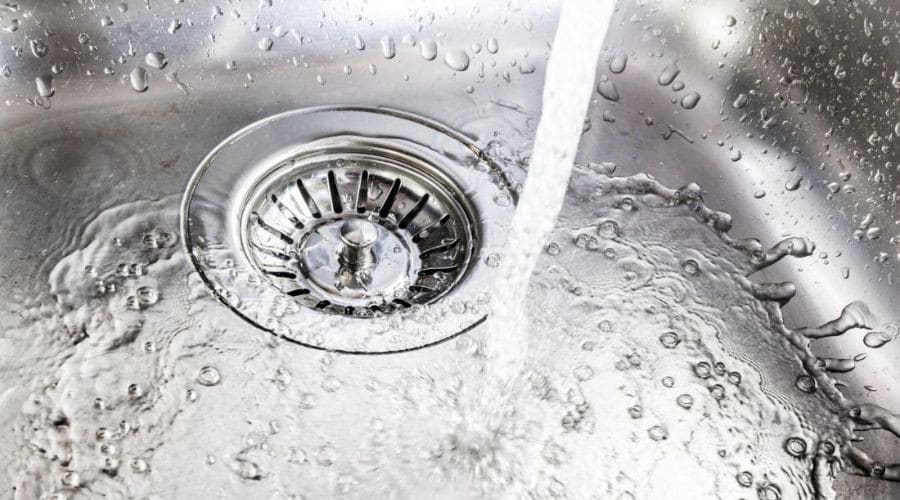Understanding the difference between a drain and a sewer is crucial for homeowners, especially when it comes to maintaining a healthy plumbing system. Let’s break down the roles of drains and sewers, explain how they function, and highlight the importance of regular maintenance, such as drain cleaning, to prevent costly repairs.
What is a Drain?
A drain is a pipe that transports wastewater from your home’s fixtures, like sinks, showers, and toilets, to a larger pipe, which is often referred to as the sewer line. Drains are smaller in diameter compared to sewer lines and are responsible for the initial collection and removal of wastewater from individual fixtures.
There are different types of drains in a home, each serving a specific purpose:
- Sink Drains: Carry water and waste from your kitchen or bathroom sinks.
- Shower/Bathtub Drains: Direct water and soap residue away from your bathing areas.
- Toilet Drains: Handle waste and toilet paper from your toilets.
Ensuring these drains are clear of obstructions is essential for preventing backups and overflows. Regular drain cleaning can help maintain their efficiency.
What is a Sewer?
A sewer, or sewer main, is a larger pipe that collects wastewater from the drains of multiple fixtures and transports it away from your home to a municipal sewer system or a septic tank. The sewer main is a crucial component of your home’s plumbing system, ensuring that all wastewater is efficiently removed from your property.
The sewer line is typically buried underground and connects to the municipal sewer system, which is managed by the city. This network of sewer pipes ultimately leads to wastewater treatment plants where the water is treated and purified before being released back into the environment.
Maintaining the sewer main is vital for preventing blockages that could cause serious plumbing issues, including backups that can lead to property damage and health hazards.
Key Differences Between Drains and Sewers
- Size and Capacity: Drains are smaller pipes that handle wastewater from individual fixtures, while the sewer main is a larger pipe that collects all wastewater from the drains and transports it away from the home.
- Location: Drains are located within the home, connected directly to sinks, showers, and toilets. The sewer main is usually located outside, underground, and connects to the municipal sewer system or a septic tank.
- Function: Drains transport wastewater from fixtures to the sewer line, while the sewer main carries this combined wastewater away from the home to the city’s sewer system or a septic tank.
Importance of Regular Maintenance
Both drains and sewers require regular maintenance to function properly. Over time, debris, grease, hair, and other materials can build up and cause clogs. Regular drain cleaning helps prevent these blockages and ensures smooth water flow.
For the sewer main, issues like tree root intrusion, cracks, or general wear and tear can lead to significant problems. Professional inspection and maintenance can identify these issues early, preventing costly repairs or replacements. Valley Plumbing offers services such as main sewer lining to address and fix any sewer main issues effectively.
Additionally, keeping an eye on your main water line is essential. While it primarily supplies clean water to your home, any issues with the main water line can indirectly affect your sewer system, as excessive water leakage can cause ground shifting and pipe damage.
Understanding the differences between drains and sewers, and the importance of regular maintenance for both, can help you maintain a healthy and efficient plumbing system. Regular drain cleaning and sewer maintenance not only prevent costly repairs but also ensure that your home’s wastewater is managed safely and effectively.
For professional drain and sewer services in Salt Lake City, Utah, contact Valley Plumbing. Our experienced team is here to help with all your plumbing needs, ensuring your system runs smoothly and efficiently.
Understanding the difference between a drain and a sewer is crucial for homeowners, especially when it comes to maintaining a healthy plumbing system. Let’s break down the roles of drains and sewers, explain how they function, and highlight the importance of regular maintenance, such as drain cleaning, to prevent costly repairs.
What is a Drain?
A drain is a pipe that transports wastewater from your home’s fixtures, like sinks, showers, and toilets, to a larger pipe, which is often referred to as the sewer line. Drains are smaller in diameter compared to sewer lines and are responsible for the initial collection and removal of wastewater from individual fixtures.
There are different types of drains in a home, each serving a specific purpose:
- Sink Drains: Carry water and waste from your kitchen or bathroom sinks.
- Shower/Bathtub Drains: Direct water and soap residue away from your bathing areas.
- Toilet Drains: Handle waste and toilet paper from your toilets.
Ensuring these drains are clear of obstructions is essential for preventing backups and overflows. Regular drain cleaning can help maintain their efficiency.
What is a Sewer?
A sewer, or sewer main, is a larger pipe that collects wastewater from the drains of multiple fixtures and transports it away from your home to a municipal sewer system or a septic tank. The sewer main is a crucial component of your home’s plumbing system, ensuring that all wastewater is efficiently removed from your property.
The sewer line is typically buried underground and connects to the municipal sewer system, which is managed by the city. This network of sewer pipes ultimately leads to wastewater treatment plants where the water is treated and purified before being released back into the environment.
Maintaining the sewer main is vital for preventing blockages that could cause serious plumbing issues, including backups that can lead to property damage and health hazards.
Key Differences Between Drains and Sewers
- Size and Capacity: Drains are smaller pipes that handle wastewater from individual fixtures, while the sewer main is a larger pipe that collects all wastewater from the drains and transports it away from the home.
- Location: Drains are located within the home, connected directly to sinks, showers, and toilets. The sewer main is usually located outside, underground, and connects to the municipal sewer system or a septic tank.
- Function: Drains transport wastewater from fixtures to the sewer line, while the sewer main carries this combined wastewater away from the home to the city’s sewer system or a septic tank.
Importance of Regular Maintenance
Both drains and sewers require regular maintenance to function properly. Over time, debris, grease, hair, and other materials can build up and cause clogs. Regular drain cleaning helps prevent these blockages and ensures smooth water flow.
For the sewer main, issues like tree root intrusion, cracks, or general wear and tear can lead to significant problems. Professional inspection and maintenance can identify these issues early, preventing costly repairs or replacements. Valley Plumbing offers services such as main sewer lining to address and fix any sewer main issues effectively.
Additionally, keeping an eye on your main water line is essential. While it primarily supplies clean water to your home, any issues with the main water line can indirectly affect your sewer system, as excessive water leakage can cause ground shifting and pipe damage.
Understanding the differences between drains and sewers, and the importance of regular maintenance for both, can help you maintain a healthy and efficient plumbing system. Regular drain cleaning and sewer maintenance not only prevent costly repairs but also ensure that your home’s wastewater is managed safely and effectively.
For professional drain and sewer services in Salt Lake City, Utah, contact Valley Plumbing. Our experienced team is here to help with all your plumbing needs, ensuring your system runs smoothly and efficiently.


